The way people shop is always changing. For a long time, the goal was to get customers to make a single purchase. Today, successful e-commerce businesses are building lasting relationships with their customers. One of the best ways to do this is through subscription models. This approach creates a steady stream of revenue and builds a loyal community around your brand.
This post will show you why subscriptions are becoming so important for online stores. We will explore different types of subscription models, look at successful examples, and give you practical steps to start your own. By the end, you will understand how to use subscriptions to grow your small business in 2026 and beyond.
What Are E-commerce Subscription Models?
An e-commerce subscription model is a business strategy where customers pay a recurring fee to receive products or services on a regular basis. Instead of a one time transaction, the customer signs up for ongoing deliveries or access. This creates predictable income for the business and offers convenience and value to the customer.
Think about it from the customer’s point of view. They get their favorite products delivered automatically, often at a discount. They save time and never have to worry about running out of essentials. For the business, this means more reliable sales forecasts and a deeper connection with customers.
Why Subscriptions Are Gaining Momentum
The move toward subscriptions is not a random trend. It is driven by powerful shifts in consumer behavior and business needs. For small business owners, understanding these drivers is key to seeing the opportunity.
Building Predictable Revenue
One of the biggest challenges for any small business is unpredictable cash flow. Sales can go up one month and down the next. Subscriptions solve this problem by creating a stable, recurring revenue stream. When you know how much money is coming in each month, you can plan your budget, inventory, and growth strategies with much more confidence.
Increasing Customer Lifetime Value
Customer lifetime value, or CLV, is the total amount of money a customer is expected to spend with your business over time. Subscriptions naturally increase this number. Instead of hoping a customer returns for another purchase, you secure their business for months or even years. A higher CLV means you can afford to spend more to acquire new customers, giving you a major advantage over competitors.
Deepening Customer Relationships
Subscription models turn transactions into relationships. Every delivery is a chance to connect with your customer. You can include personalized notes, ask for feedback, or offer exclusive perks. This ongoing interaction builds a strong sense of community and loyalty. Customers feel like they are part of a club, not just another number in a sales report. This connection makes them less likely to switch to a competitor.
Types of Subscription Models to Consider
There is no one size fits all approach to subscriptions. The right model for your business depends on what you sell and who your customers are. Here are three popular types to consider.
1. Replenishment Model
The replenishment model is perfect for products that customers use regularly and need to restock. This is sometimes called the “subscribe and save” model. Customers sign up to receive automatic deliveries of items like coffee, pet food, vitamins, or skincare products.
Real World Example: Dollar Shave Club built a billion dollar business with this model. They deliver razor blades and grooming products to customers every month. This saves customers a trip to the store and ensures they always have fresh supplies. For a small business, this could work for anything from artisanal coffee beans to organic cleaning supplies.
2. Curation Model
The curation model is all about surprise and discovery. Customers pay a recurring fee to receive a box of handpicked items. These boxes are usually centered around a specific theme or interest, like beauty products, gourmet snacks, or books. The value for the customer is the expert curation and the fun of trying new things.
Real World Example: Birchbox is a pioneer in this space. For a monthly fee, subscribers get a box of deluxe beauty samples. This allows them to discover new makeup and skincare products without committing to full size versions. Small businesses can use this model to showcase unique products from different artisans or to create a themed experience around their own product line.
3. Access Model
The access model gives customers exclusive perks in exchange for a membership fee. This is less about physical products and more about unlocking special benefits. These benefits could include members only discounts, free shipping, early access to new products, or exclusive content.
Real World Example: Amazon Prime is the ultimate example of an access subscription. Members pay an annual fee for benefits like fast, free shipping, streaming services, and special deals. A small clothing boutique could offer an access subscription that gives members free shipping on all orders and a 15% discount on every purchase.
How to Launch Your Own Subscription Service
Ready to explore subscriptions for your business? Here is a simple, four step plan to get you started.
Step 1: Validate Your Idea
Before you invest time and money, make sure a subscription makes sense for your products and your audience. Ask yourself a few questions. Do you sell something people need or want regularly? Can you offer a unique curation or valuable access? Talk to your existing customers. Would they be interested in a subscription? Their feedback is your most valuable resource.
Step 2: Define Your Offer
Decide which subscription model fits your business best. Will you offer replenishment, curation, or access? Then, figure out the details. What exactly will customers get? How often will they receive it? Most importantly, determine your pricing. Your price needs to be attractive to customers while still being profitable for you. Look at what competitors are doing, but focus on the unique value you provide.
Step 3: Choose the Right Technology
You will need a platform that can handle recurring billing and subscription management. Many popular e-commerce platforms like Shopify, BigCommerce, and WooCommerce have apps and plugins that make this easy. Tools like Recharge or Bold Subscriptions integrate directly with your online store. They manage the entire subscription lifecycle, from customer signup to recurring payments.
Step 4: Market Your Subscription
Once you are set up, it is time to tell the world. Promote your new subscription service on your website, through email, and on social media. Clearly explain the benefits. Is it about convenience, savings, or exclusivity? Create a special introductory offer to encourage your first subscribers. Make it easy for existing customers to switch from one time purchases to a subscription.
Your Next Step Toward Predictable Growth
Subscription models are more than just a trend; they represent a fundamental shift in how e-commerce operates. By 2026, businesses that have embraced recurring revenue will be the ones leading the market. They will have more stable finances, more loyal customers, and a stronger foundation for growth.
For small business owners, this is an incredible opportunity. You do not need a massive budget to start. Begin with a simple offer, listen to your customers, and grow from there. By building a subscription service, you are not just selling a product; you are building a resilient business designed for the future.
We Want To Talk To You About Your Marketing Goals.
Let’s Supercharge Your Online Growth!












